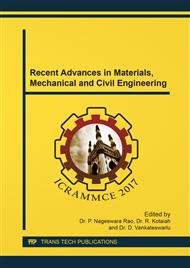p.294
p.299
p.305
p.313
p.320
p.327
p.335
p.341
p.347
Thermo Structural Analysis of Carbon-Carbon Nozzle Exit Cone for Rocket Cryo Engines
Abstract:
Launch and space vehicle structures are required to be extremely weight efficient. The need to achieve the performance required for the engine in the upper stage of a launch vehicle, increase the payload capacity drives rocket engine manufacturers to seek higher thrust level, specific impulse and thrust to weight ratio. The use of high temperature C-C composite materials is an efficient way to reach these objectives by allowing use of high expansion ratio. Nozzle extensions benefiting of the outstanding thermal, mechanical and fatigue resistance of these materials to decrease mass and featuring high temperature margins. A three-directionally reinforced (3D) carbon-carbon (c-c) material nozzle exit cone is selected for the current study. C-C composite exit nozzle must possess excellent stability and strength under extreme conditions for a specified amount of time. Carbon-carbon composites are appropriate materials for applications that require high specific strength at elevated temperatures. The paper describes the thermo structural analysis of a typical c/c nozzle exit cone.
Info:
Periodical:
Pages:
320-326
Citation:
Online since:
February 2018
Authors:
Price:
Сopyright:
© 2018 Trans Tech Publications Ltd. All Rights Reserved
Share:
Citation:


